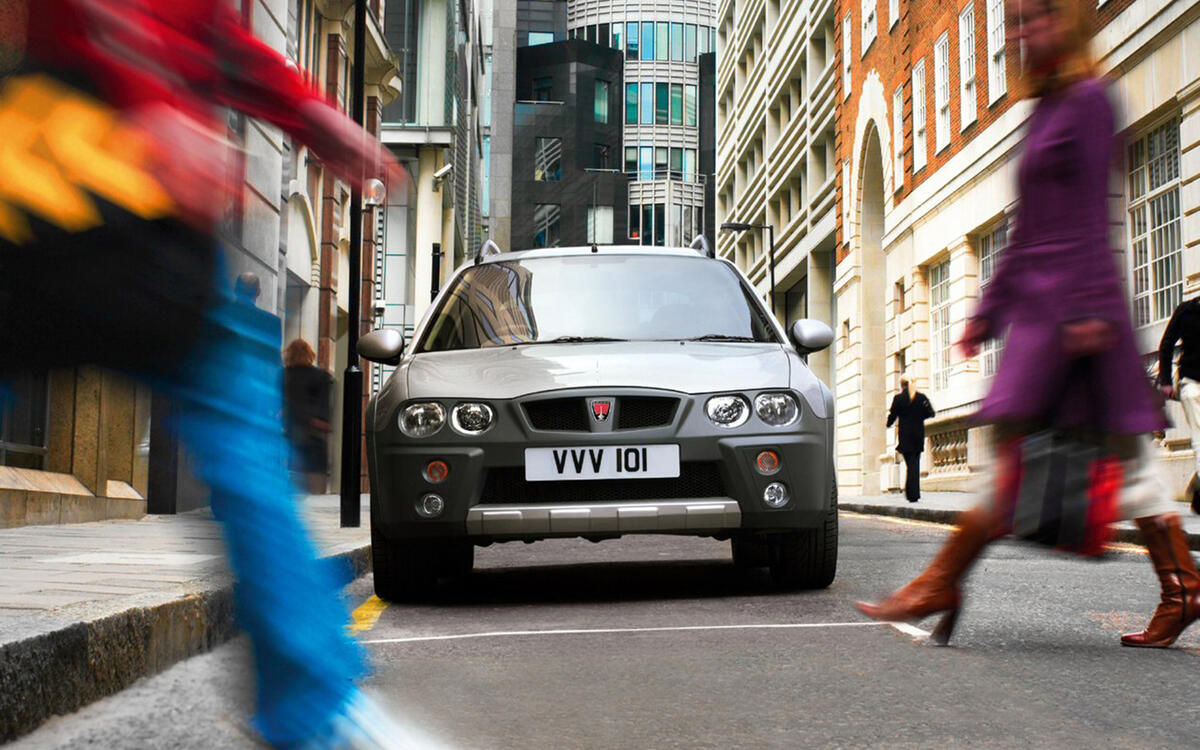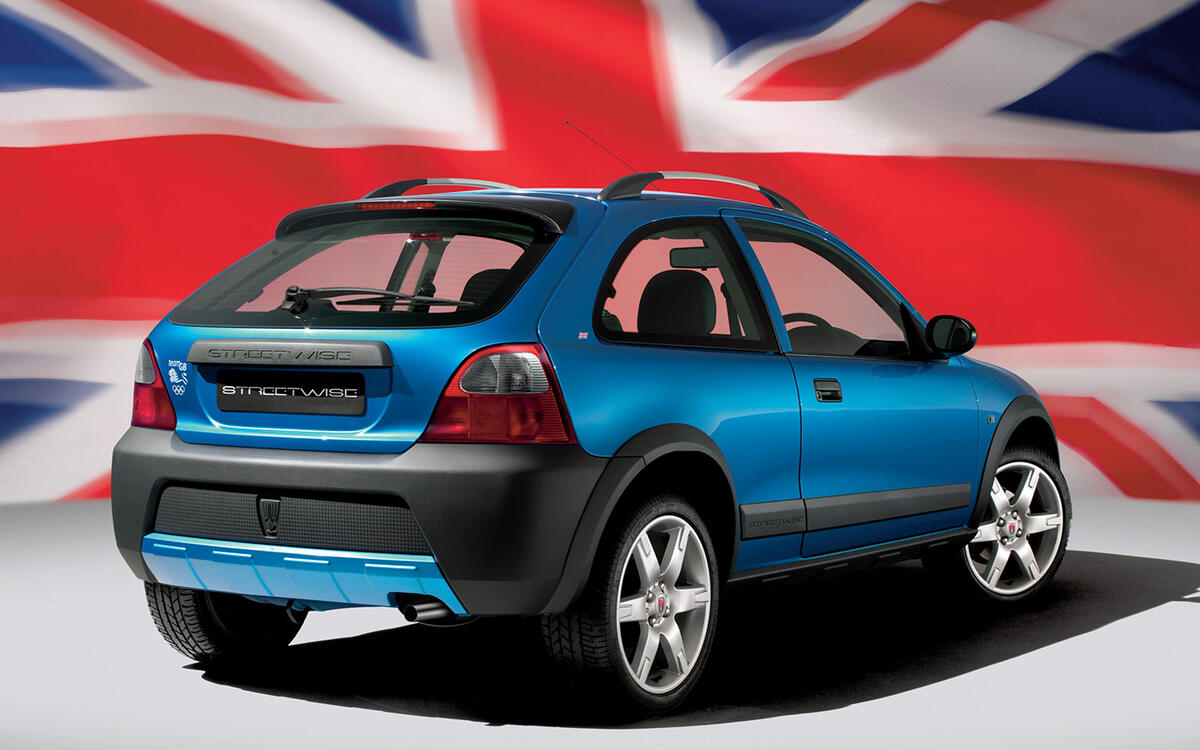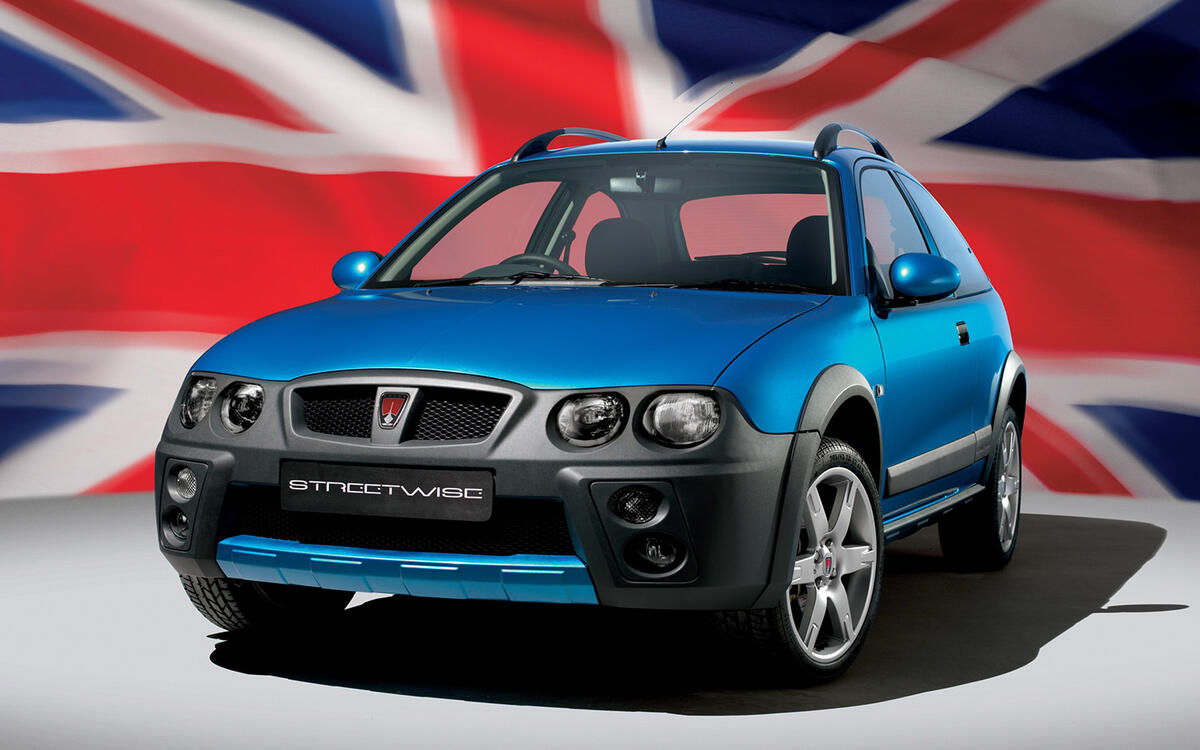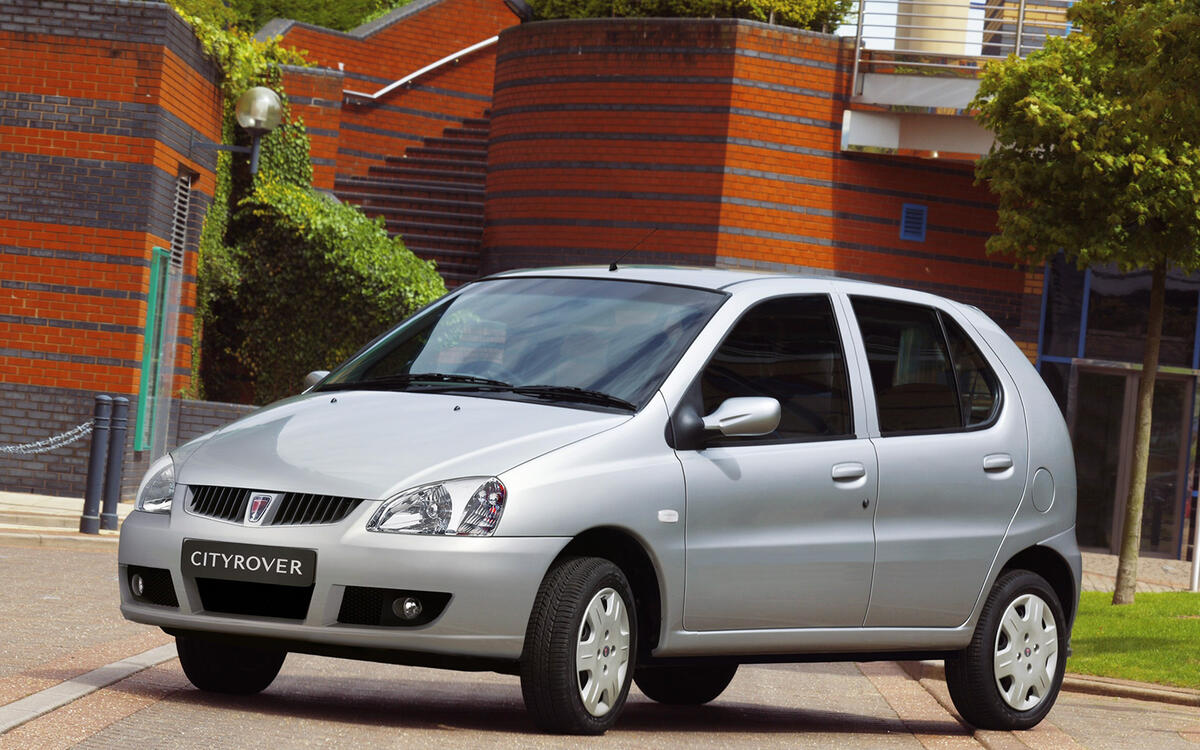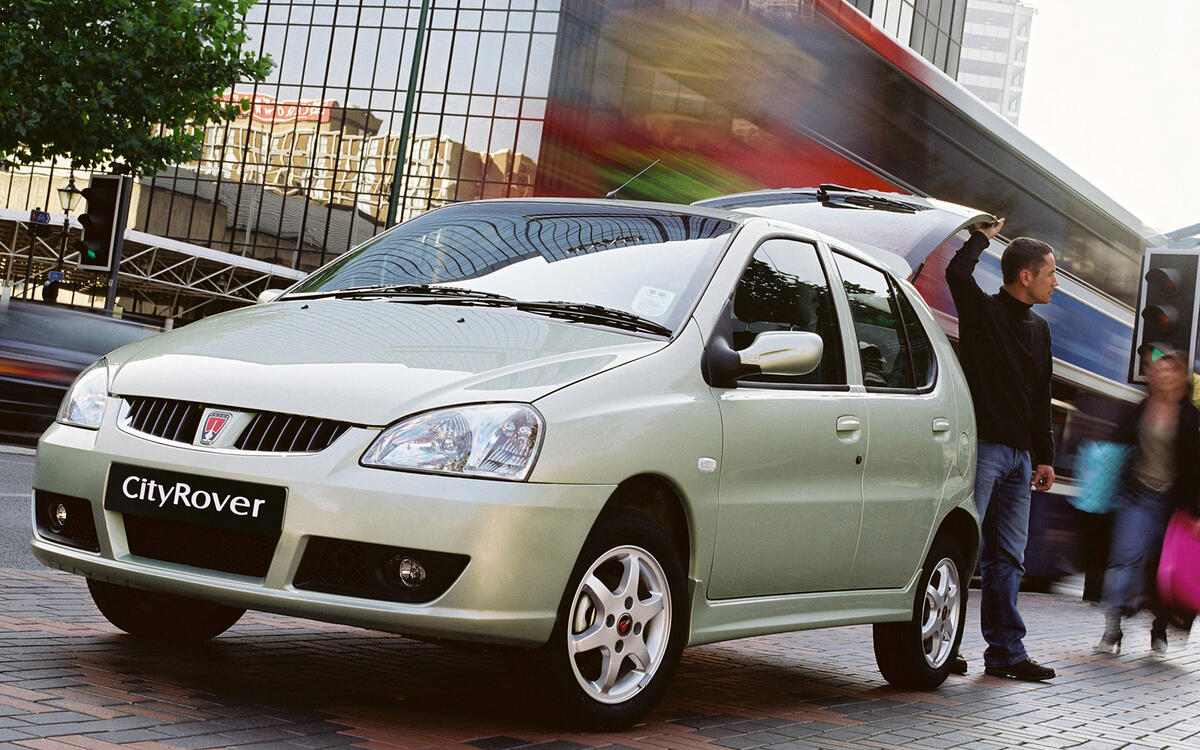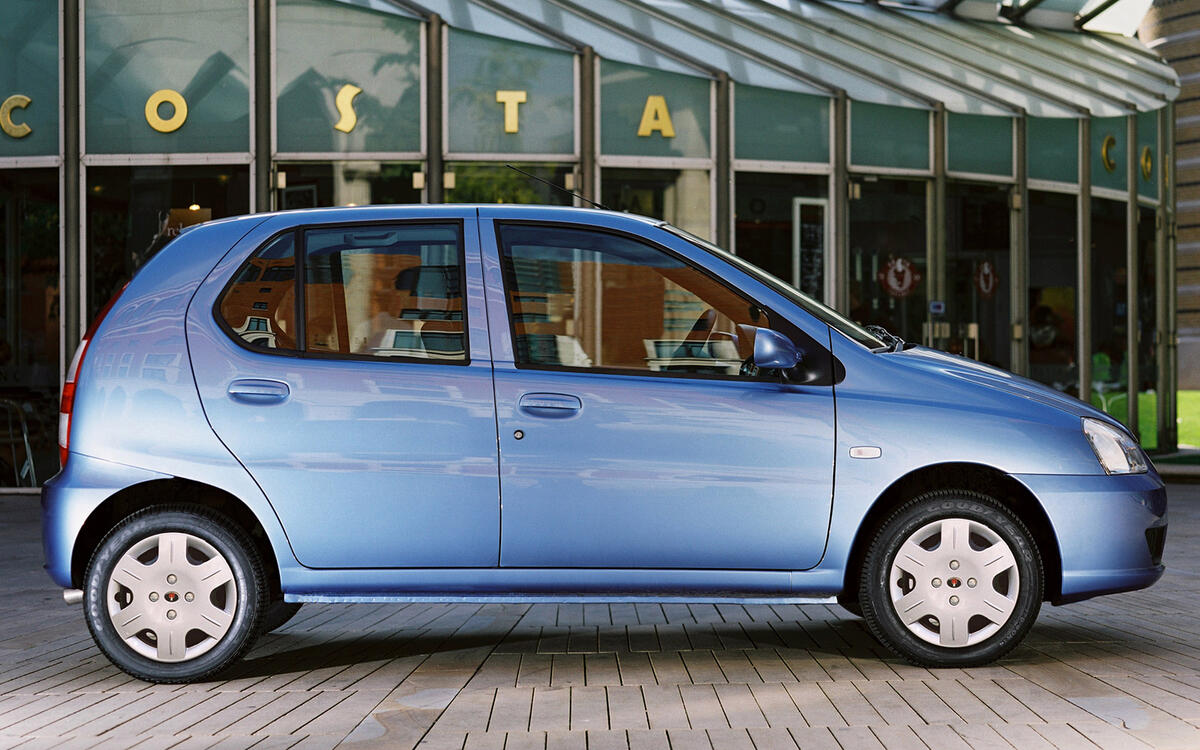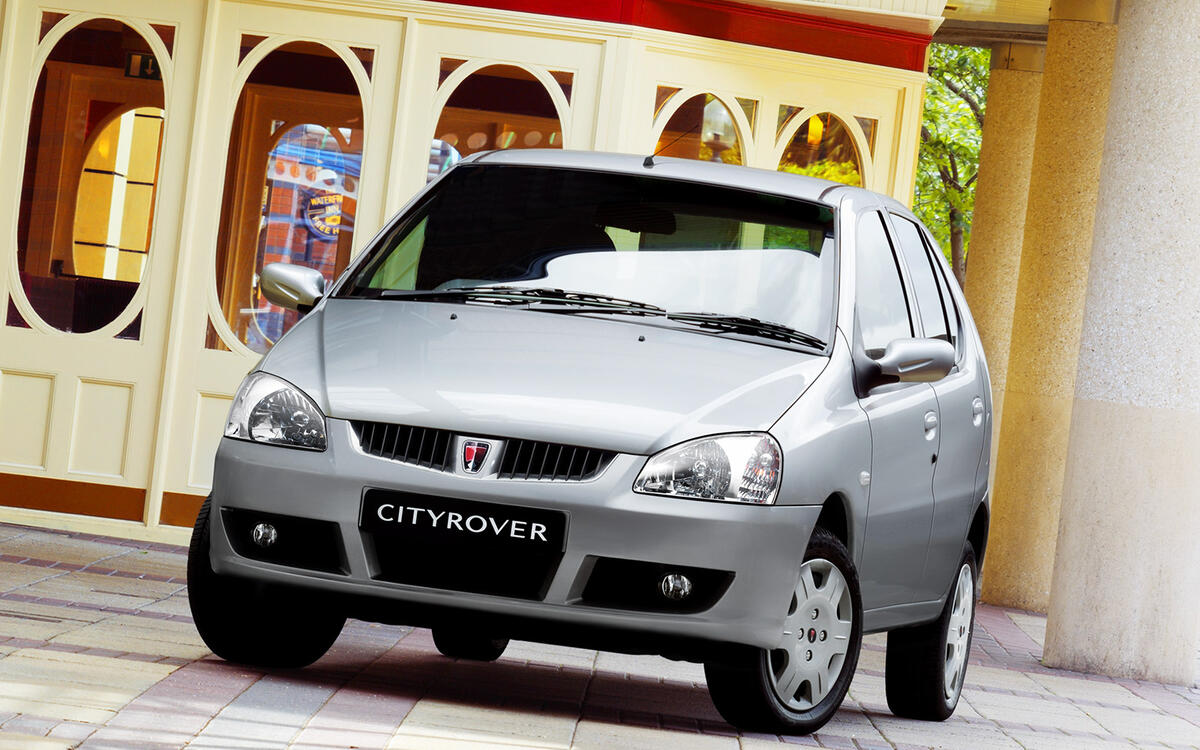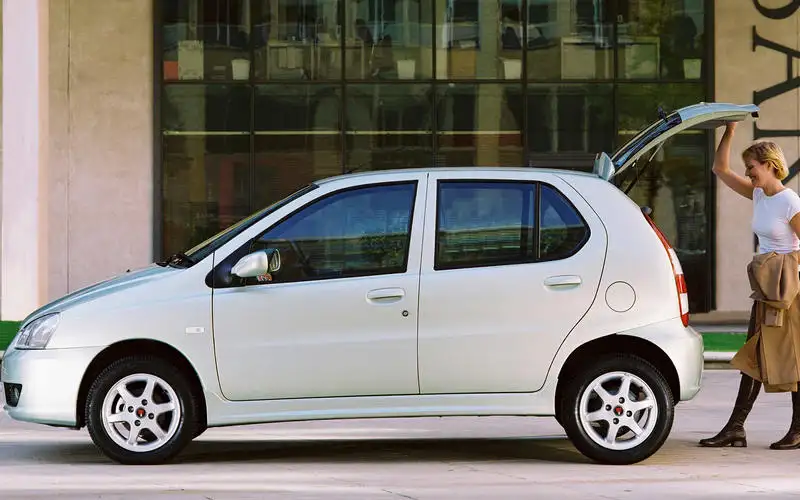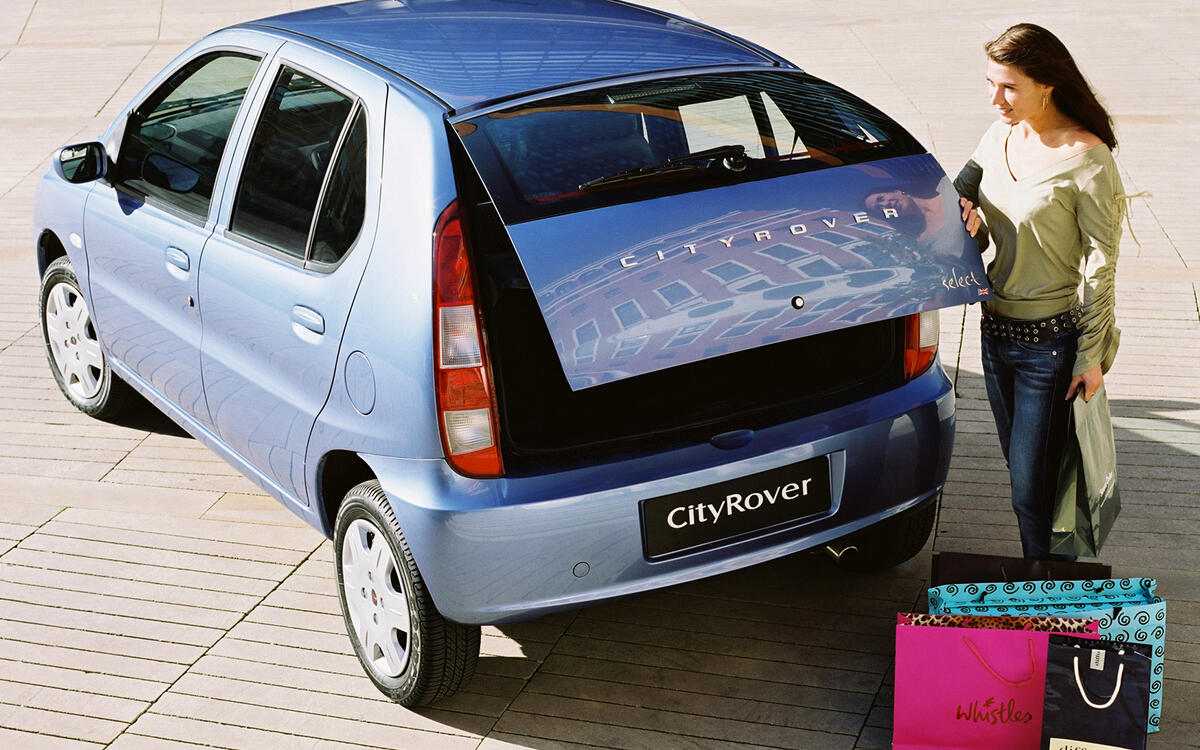 Slide of
Slide of
In its eleventh hour, MG Rover was pinning its hopes on a pumped-up Rover 25 and a rebadged Tata Indica
MG Rover collapsed in April 2005 with debts of more than £1bn. Its demise came just five years after BMW sold Rover to Phoenix Venture Holdings for a tenner, with the newly renamed MG Rover having just lost two of its prized assets in Mini - shrewdly retained by BMW - and Land Rover, sold to Ford: BMW had already figured out a SUV path all of its own.
Despite strong sales for the MG TF, the success of ZR, ZS and ZT, and the sale of the bulk of its site in Longbridge, the company fell into Chinese hands, consigning the Rover name to history. Two cars with contrasting fortunes arrived in the eleventh hour but were unable to save the company. This is their (brief) story:
 Slide of
Slide of
Rover Streetwise
The Rover Streetwise stood out like a sore thumb when it arrived in 2003. MG Rover’s range consisted of the ageing 25 and 45, the smooth and sophisticated 75, a trio of surprisingly excellent MG performance hatches and saloons, and the popular TF. The jacked-up hatchback wasn’t really a thing two decades ago, so the Streetwise was entering uncharted territory...
 Slide of
Slide of
The Urban On-Roader
But not literally. Despite appearances, the Streetwise was designed for just that – the street. Rover called it an ‘Urban On-Roader’, which resulted in much sniggering in automotive circles, but the idea feels rather prescient in this era of crossovers and soft-roaders. ‘Streetwise is tougher than more ordinary cars; purposefully designed to survive and thrive in one of the world’s most challenging driving environments – a typical city street,’ said Rover.
 Slide of
Slide of
Twenty-five going under
It was based on the Rover 25, a car launched in 1999, but based on the 200 of 1995. If the 25 was ‘ageing’, the 200 was positively ‘geriatric’, so the Streetwise shouldn’t have worked. But it did. It’s amazing what you can achieve by raising the ride height, adding some body armour, a pair of roof bars and alloy wheels, and tickling the interior. Cleverly, it was billed as ‘The New Streetwise by Rover’, with the model name given greater prominence than the make.
 Slide of
Slide of
Bog-standard, but not for bogs
Some road testers failed to see its potential, but our Steve Cropley was one of the enlightened few. Following a first drive, he said: “Rover has taken a bog-standard Rover 25, raised it an inch on its suspension, kit it with bigger wheels and tyres, and generally give it the ‘Allroad’ treatment with plastic mouldings across the nose and grille, additional wheelarch mouldings and side rubbing strips, plus tough looking strakes under the nose and tail.”
 Slide of
Slide of
And now something for our younger viewers
Cropley continued: “There are short roof-rails, too. Inside, there are various neat and thoughtful details: some brightwork on the dash, a fat gearknob, good-looking seats with generous side bolstering and individual seats in the rear, instead of the ordinary Rover 25 bench. It’s a pleasant package, and four younger drivers I showed it to definitely liked it, so Streetwise appears to have decent prospects."
 Slide of
Slide of
International bright young thing
Those decent prospects turned into healthy figures, with MG Rover shifting 2688 units in 2003, 8182 in 2004 (its only full year of sales) and 1977 in 2005. More than acceptable for a jacked-up Rover 25, especially when you consider its relative success in Europe. Fire up the AutoScout24 pan-European used car sales website and you pick from a bevy of them.
 Slide of
Slide of
Engines and trims
The Streetwise launched in 2003 with a pair of 1.4-litre A-series petrol engines and a 2.0-litre L-series turbo-diesel, but the range was bolstered in 2004 by the arrival of a 108bhp 1.6-litre petrol with a manual gearbox and a 116bhp 1.8-litre with a CVT. There were three trim levels at launch – basic, S and SE – along with a choice of three or five doors.
 Slide of
Slide of
Sub-£10k starting price
At £9295 (£15,500) in today’s money, the entry-level Streetwise was a bargain. Sure, you had to put up with steel wheels, three doors and the weedy 83bhp 1.4-litre petrol engine, but £9k didn’t get you an awful lot in 2003. We’re talking base-spec Citroën C3 or Ford Fiesta, mid-range Daihatsu Sirion or Fiat Punto, or Rover 25 1.4i E. In that company, it represented excellent value.
 Slide of
Slide of
Future classic?
Peter Stevens, who was tasked with turning the 25 into an urban warrior, has previously labelled the Streetwise a future classic. Commenting on an online article, he said: ‘People should look out for a low-mileage, good condition, black Streetwise’. That was in 2007. Sixteen years later, there are around 600 on the roads of Britain, with others listed as SORN.
 Slide of
Slide of
Accessorise your Streetwise
In another canny move, MG Rover unveiled a suite of Streetwise accessories, calling it ‘a way of raising your status in a bland urban environment’. Buyers could upgrade from 16in to 17in alloys, add roof cross bars, fit Land Rover-style light guards, front fog lights, side bars and a front nudge bar. It was as though a Rover 25 had driven into a branch of Mountain Warehouse. It shouldn’t have worked, but it did.
Unfortunately for the Streetwise, the collapse of MG Rover led to its premature demise, but it lived on in the form of the Chinese-market MG3 SW. It couldn’t save the company, but it put in a real shift, which is more than you can say about the CityRover…
 Slide of
Slide of
Rover CityRover
Arriving just months after the Streetwise, the CityRover was the last new car before MG Rover’s collapse. It was also the company’s first city car since the 1997 demise of the Rover 100, previously and better known as Metro. Another ‘British Car to Beat the World’ to drive the company forward, only this time in the form of a rebadged Indian-built city car with a distinctly French ex-Peugeot 1.4-litre petrol engine.
 Slide of
Slide of
Bucket and see
MG Rover took a Tata Indica and treated it to stiffer springs, new dampers, a 20mm lower height and revised grille and bumpers. In isolation, it looked like a Rover – note the C I T Y R O V E R letters on the boot, designed to lend the car some ‘Hyacinth Bouquet’ levels of prestige, but the little car was straight out of the bargain bucket. The poor paint finish and large panel gaps were the biggest clues to the car’s origins.
 Slide of
Slide of
Cheap and cheerful
Still, the CityRover was cheap, with a starting price of £6495 for the Solo, £7895 for the sporty-ish Sprite and £8895 for the Style. Adjusted for inflation, those prices become £10,875, £13,250 and £14,900 – quite reasonable, when all today except Dacia have left the budget space behind.
 Slide of
Slide of
Going Solo
Standard equipment included driver airbag, three-year/60,000-mile warranty and six-year anti-perforation cover, with all but the Solo model featuring power steering, 60:40 split folding rear seats, remote central locking and CD player. The Sprite added air-conditioning, while the Style featured ABS and passenger airbag. ABS was a £300 option on the other trim levels, until an EU law change made it mandatory. Your safety was important, but only in the CityRover Style.
 Slide of
Slide of
Chris Harris liked it
A certain Chris Harris reviewed the car for us (you may have heard of him), and he was surprisingly positive in his assessment. “Four adults can easily sit in comfort and rear leg- and headroom shame that of a Ford Ka. It’s a chassis that works well in its intended environment; not so well outside it. It’s not a bad car. Given the available resources, it really isn’t a bad effort.” Those were the pros…
 Slide of
Slide of
Bare bones on a budget
Which brings us on to the cons. Harris called the gearchange “dreadful”, the ride “busy”, grip “moderate” and the interior ”woeful”. He also said that it was too expensive; the cheapest Skoda Fabia would make more sense. But overall, he rather liked the car, which is something you can remind him about on social media. Maybe he’ll do a swap for his beloved Peugeot 205 Rallye…
 Slide of
Slide of
Outdated and outmoded
Or maybe not. The CityRover was based on car that launched in India in December 1998, so by the time it arrived in the UK some five years later, it was already outdated and outmoded. It didn’t help that other manufacturers were raising the game; the era of cheap meaning nasty was over. The engine was a high point – performance was brisk, aided by the car’s low weight – but the interior saw Rover purists yearning for the return of the Metro.
 Slide of
Slide of
Sales flop
Worse still, MG Rover was accused of profiteering, amid reports that it was paying Tata just £3000 for every CityRover. A £900 price cut in December 2004 had little impact, while a planned CityRover Turbo was another victim of MG Rover’s collapse. The company expected to sell 20,000 units annually over five years, but sales limped to just 9218.
 Slide of
Slide of
Flop Gear
The CityRover was famously a victim of Clarkson, Hammond and May. MG Rover refused to supply a car to Top Gear for review, so James May went undercover as a Rover customer and borrowed a CityRover from a showroom. Pulling no punches, May – who’s known as a fan of affordable small cars – called it “the worst car I’ve driven on this programme”.
 Slide of
Slide of
Rover and out
Today, there are 176 CityRovers on the road and around 600 examples of the Streetwise, with prices starting from around £1000 for the former and £2000 for the latter. There’s no question which one is the most desirable – but if you’re shopping for an eleventh-hour Rover, the wise money is on the armoured 25, rather than the Indian hand-me-down.
Access control:
Open


